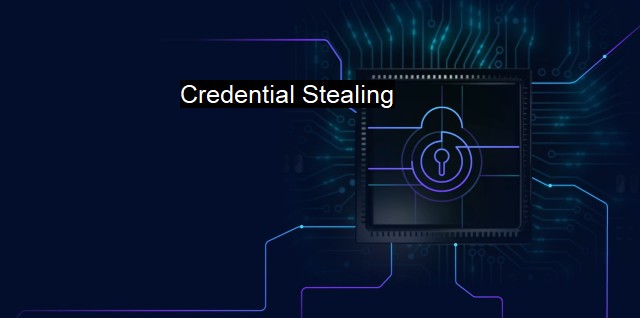What is Credential Stealing?
Uncovering the Threats of Credential Stealing in Cybersecurity: Phishing, Malware and Social Engineering Impacts
Credential stealing is a malicious activity that typically involves unauthorized individuals or entities acquiring confidential information such as usernames, passwords, credit card numbers, or social security numbers, which they can use to perpetrate fraudulent activities. This fraudulent action is widely prevalent in the realm of cybersecurity and triggers numerous alarm bells in antivirus protocols due to the massiveness of the risk it poses to both individuals and corporations.The term "credential" generally refers to disruption-born computer and network authentication, typically in the form of alphanumeric or other complex combinations. Primarily, credentials are a security measure used to verify the identity of individuals seeking access to confidential data or systems. When these credentials fall into the wrong hands, unauthorized access becomes imminent.
An array of dire consequences including potential identity theft, financial fraud, and corporate espionage spring up when credential stealing successfully takes place. Personal and sensitive information could be used for a variety of malicious activities such as selling to the highest bidder on the dark web, creating fake accounts and profiles, altering or stealing information, or even damaging systems just for the thrill of it.
Cyber threats engaged in credential stealing come in numerous forms. The first, and perhaps the most prevalent, is phishing, a malicious practice that tricks individuals into voluntarily giving out their credentials. Often, a phishing attempt masquerades as an email, message, or webpage from a trusted source prompting the individual to enter their credentials, which then goes directly into the database of cyber thieves.
Another common technique is keystroke logging, where malicious software or programs record keystrokes on a computer. From these logs, hackers can easily identify and extract credentials for various accounts. With the advancement of technology, malware designed to steal credentials has and continues to become increasingly sophisticated, with some being able to disable antivirus protection, or even to hide in a system, accessing and collecting information without arousing suspicion.
Credential stuffing attacks also represent a quintessential credential stealing method, where attackers exploit the common misuse of credentials. They use previously stolen or leaked credentials to gain unauthorized access to other accounts on different platforms, capitalizing on the tendency of individuals to reuse the same passwords.
In the context of cybersecurity and antivirus protection, combating credential stealing needs to be a top priority due to the immense ramifications these attacks bear. Protective measures must involve multi-layer defense strategies encompassing proactive antivirus software, firewalls, intrusion detection and prevention systems (IDPSs), as well as secure backups. Engaging biometric authentication also reduces the risk of credential theft to a great extent.
Educating users on cybersecurity hygiene plays a pivotal role in mending this situation, such as implementing strong, unique passwords, employing two-factor authentication, and exercising caution when prompted to enter credentials. Training modules and awareness campaigns thus far proved to be constructive.
Credential stealing presents a massive risk in today's digital world. Combating it requires a comprehensive approach: from individuals being more conscious about safeguarding personal information to IT organizations integrating robust antivirus and cybersecurity structures to keep this malady at bay. At every level, vigilance and robust security practices are the frontline defenses against the tide of credential theft in our increasingly interconnected cyber landscape.

Credential Stealing FAQs
What is credential stealing?
Credential stealing is a type of cyberattack that involves stealing login credentials of a user to gain unauthorized access to their systems, applications, or data.How does credential stealing occur?
Credential stealing can occur through various means such as phishing, keylogging, malware, and social engineering. Hackers often use these tactics to trick users into sharing their login credentials or steal them without their knowledge.What are the consequences of credential stealing?
The consequences of credential stealing can be severe, including financial loss, reputation damage, and identity theft. A hacker who gains unauthorized access to your system or data can steal sensitive information, compromise your accounts, and cause irreparable harm to your business or personal life.How can I prevent credential stealing?
To prevent credential stealing, you must take measures such as using strong passwords, enabling two-factor authentication, keeping your software up-to-date, avoiding suspicious links or emails, and using reliable antivirus software. You should also be cautious while using public Wi-Fi networks and never share your login credentials with anyone.| | A | | | B | | | C | | | D | | | E | | | F | | | G | | | H | | | I | | | J | | | K | | | L | | | M | |
| | N | | | O | | | P | | | Q | | | R | | | S | | | T | | | U | | | V | | | W | | | X | | | Y | | | Z | |
| | 1 | | | 2 | | | 3 | | | 4 | | | 7 | | | 8 | | |||||||